
When you wear a smartwatch, you have the ability to stay connected and multitask conveniently and efficiently. Smartwatches sync with your smartphone, passing on noteworthy information to your wrist. Common notifications can be incoming calls, messages, e-mails, and more. That allows you to keep your phone out of your hands, without missing out on what’s important. And that’s all on top of how smartwatches track activity, exercise, and other health metrics and important vitals. This guide can help you learn about how a smartwatch can suit your lifestyle.
Smartwatch Buying Guide Quick Reference Handout
Table of contents
- Benefits of wearing a smartwatch
- Style and display choices
- Latest and greatest smartwatches
- New technology in smartwatches
- Special features and customization with the app
Benefits of wearing a smartwatch
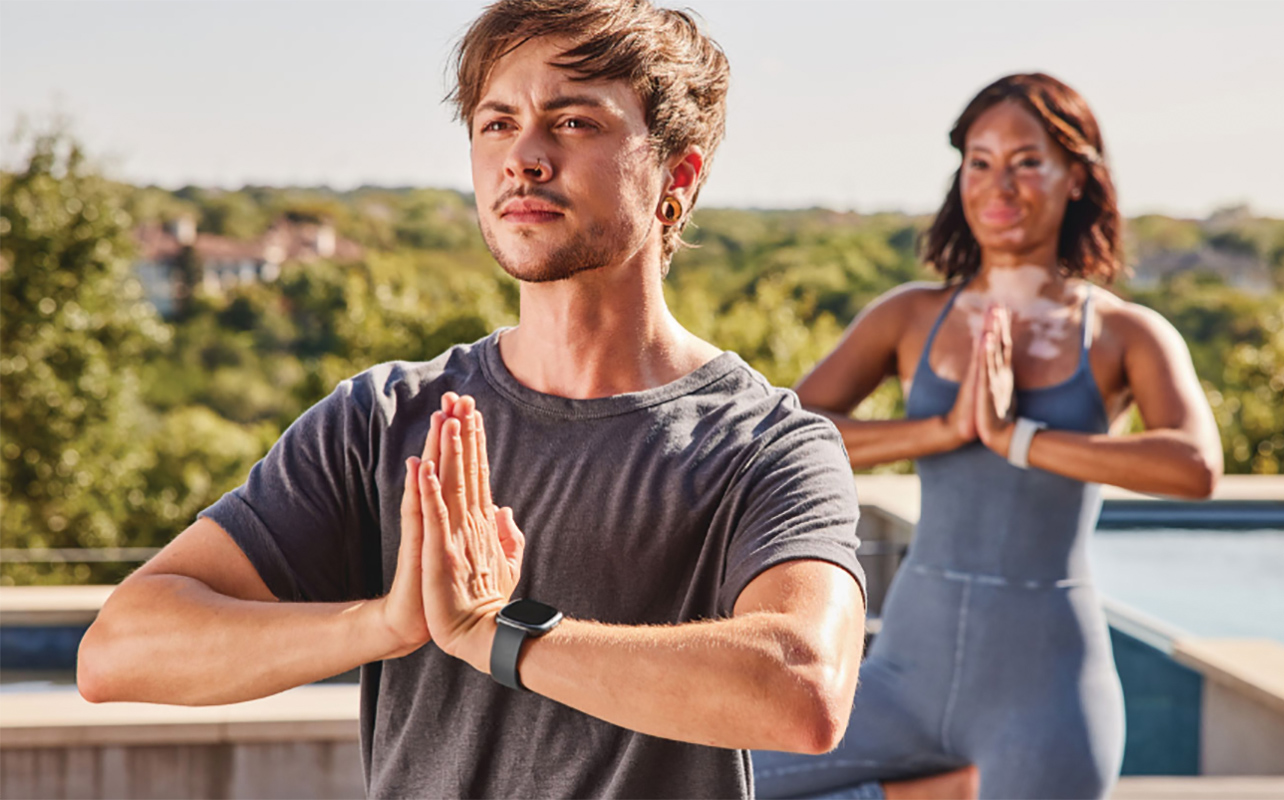
Like any watch, a smartwatch will tell you the time. But the “smart” in smartwatch comes with all the other features you get with it.
Phone notifications
For the most part, wearing a smartwatch is like extending your smartphone to your wrist. While paired with your smartphone, many smartwatches can display the same notifications from your phone. It’s a convenient way to see pertinent and timely information. This can include reminders, calendar alerts, alarms, and notifications from your favorite compatible apps.
Activity tracking
Activity tracking works in much the same way. Whether you’re out for a long walk or just strolling through the neighbourhood, a smartwatch will track all those steps and gauge how many calories you burn while doing it. The same is true while going for a run, no matter how vigorous or leisurely it might be. Many have deeper exercise tracking for working out at the gym, cycling, hiking, swimming, and dozens of other activities.
All day 24/7 health tracking
Passive tracking also applies when wearing a smartwatch. Health rate monitoring and accuracy grew considerably over the years, which has since led to additional features. Onboard sensors can measure blood oxygen, skin temperature, electrocardiogram (ECG), blood pressure, and more, depending on the watch. Sleep tracking has also greatly improved to provide insight into how well you slept on any given night.
Connectivity
Smartwatches generally connect via Bluetooth to maintain constant connectivity when paired with an Android or iOS smartphone or tablet. Some also support Wi-Fi, which you can use for certain features where necessary. Others take it further with LTE support, letting them operate independently of the phone itself. In this case, however, you would need a separate carrier plan.
Style and display choices

OLED and AMOLED
OLED (organic light emitting diode) and AMOLED (active-matrix organic light-emitting diode) displays are common in smartphones, and make up the glass on many smartwatches as well. These displays produce deeper blacks and higher contrast ratios. They are also thinner with lower power consumption than other types of smartwatch displays. One difference between them is that OLED screens can come in single or full-colour variants, whereas AMOLED screens are always available in full colour.
LCD
LCD (liquid-crystal display) is also a common display technology. This requires a backlight to illuminate the display, which often means there will be an additional layer of thickness. While the additional light can’t replicate the deep black levels and a contrast ratio of OLED and AMOLED, they are easier to see in bright sunlight and other similar settings.
Black and white
These screens lack the colour that makes others look dynamic. But they have an advantage in considerably improving battery life. Some black and white or monochrome displays are OLED. Others use the same E-Ink displays typically used in eReaders. These are legible in bright environments without glare. But they would need a light source to be visible in the dark.
Display
Smartwatches often offer always-on displays, which keeps the screen active at all times. Other times, they only light up when activated by motion, like flicking your wrist up to light up the screen for a quick glance. This is ideal to preserve battery life. Most smartwatches also use touchscreen displays, letting you tap and swipe for easy, intuitive navigation. Some include side buttons or digital crowns as well as another method of navigating the screen.
Stronger glass
Smartwatches will sometimes use the same type of fortified glass smartphones do. Corning Gorilla Glass is renowned for its ability to handle daily wear and tear and reduce instances of scratches and blemishes. It’s still susceptible to cracks if hit with a very hard impact. But it is overall quite durable. Sapphire glass is even tougher and able to withstand rigorous conditions, it could be good to have that added protection.
Water-resistant/waterproof
Smartwatches will offer varying degrees of water resistance and waterproofing to ensure they can still function when exposed or submerged. That additional protection is great for engaging in outdoor activities where rain or snow might be in the mix. A water-resistant smartwatch can help you track swimming without worrying about a malfunction.
The most common water-resistance ratings you’ll see for smartwatches are IP68 and 5ATM. IP68 refers to dust and water resistance. With this rating, the watch can be submerged in up to 1.5 metres of water for up to 30 minutes. 5ATM relates to water pressure. A smartwatch that meets this rating as well can be submerged down to 50 metres. However, this doesn’t make it usable for activities like diving. For that, you’ll need a special rugged smartwatch rated specifically for this use.
Some of the most rugged smartwatches nowadays afford ratings up to 10ATM. Note that even water-resistant watches should be used with caution in saltwater or heavily chlorinated pools. Any water-resistance rating relates to freshwater sources.
Watch bands
One of the great things about smartwatches is that they come in a variety of styles and designs. This includes both the face as well as interchangeable bands. Certain watches use standard lugs common with regular watches, making it possible to use bands from existing watches. Others use proprietary latches that only work with compatible straps. There’s an active market supporting either type with various styles made of different materials.
Many are inspired by traditional watches, which is why you will find bands with classic looks made of leather or stainless steel. Others are made of fabrics for a nice, casual feel that can fit in a variety of situations. Then you get some made of silicone offering maximum flexibility and durability—great options for being outdoors or working out.
Special features
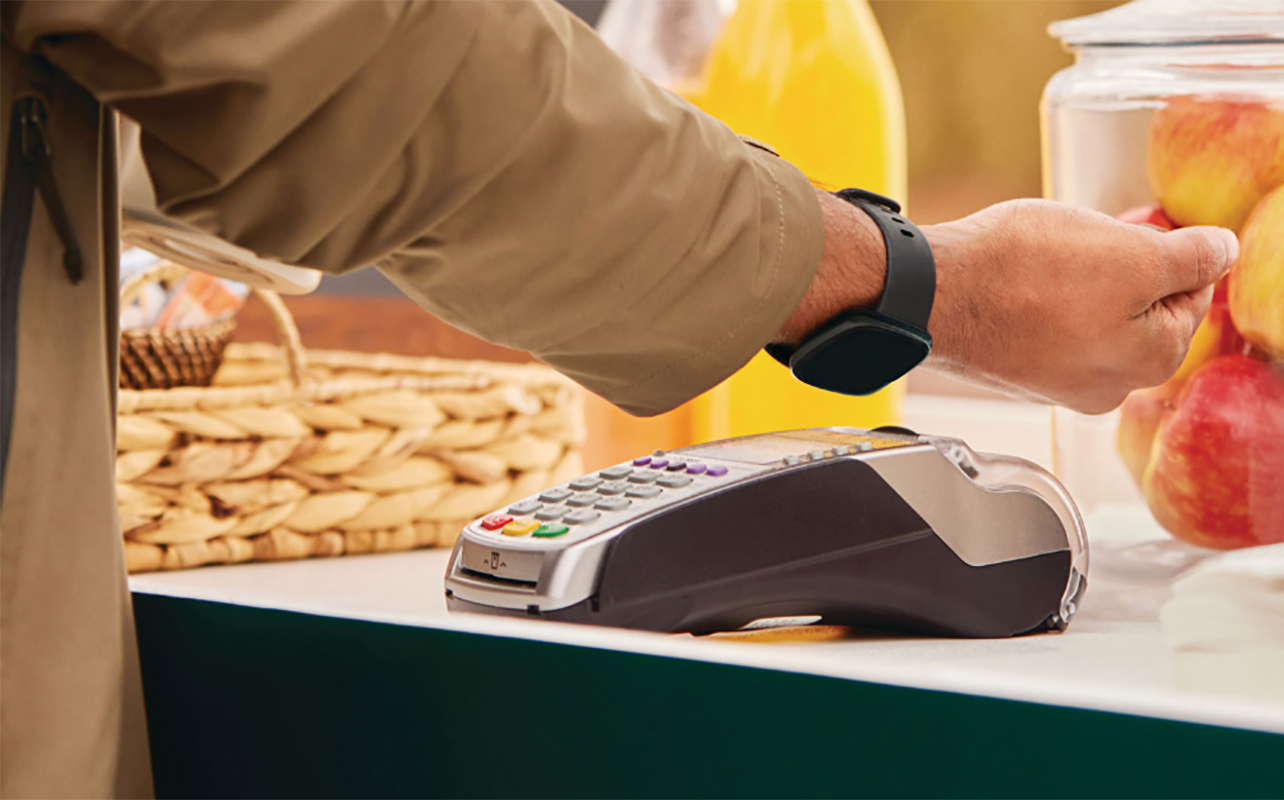
What makes a smartwatch versatile is how extra features figure into the wider feature set. And that list is only getting longer. Here are some that are usually available:
Notifications
Smartwatches can display notifications from your phone so you don’t have to pull it out every time there’s a “ding” or vibration. These can include calls, messages, e-mails, social media posts and “likes,” reminders, alarms, even news headlines. They are customizable, so you decide which notifications you ultimately want to see pop up on your watch.
If you prefer to maintain some privacy, you could have notifications alert you without showing anything, or keep them quiet altogether. You can also decide whether you want the watch to beep or vibrate, depending on your preference.
Voice control
You can talk to your smartwatch the same way you would from your phone. Popular voice assistants, like Siri, Google Assistant, and Alexa, may be embedded and active on your wrist, depending on the watch and associated brand.
Smartwatches with built-in speakers may offer the option to make and receive calls directly without having to pick up the phone. So long as the watch is within Bluetooth range when paired with your phone, or has its own cellular data connection, it’s an easy task.
Music
You may have the option to store your own music on your watch’s internal memory for playback without a data or Wi-Fi connection. In some cases, you can pair Bluetooth headphones directly with the smartwatch and listen to music without the phone. There may also be tighter integration or support for popular music streaming services. In this case, you can control music playing on your phone through your watch.
Payments
Have you ever used your phone to pay for something at a store or restaurant? Some smartwatches will let you do that straight from your wrist. All you need to do is load your debit or credit cards in the app and you can tap to pay right from your wrist. Some allow you to add other cards as well, like loyalty cards, IDs, transit passes, and more. In some countries, you can even load your driver’s license, work ID, and more.
Link alarm
If you venture too far away from the wireless range of your paired phone, the watch may trigger an audible or vibrating alert. You can also use finding features so your phone can find your watch or vice versa.
Smart home control
With some of the latest premium smartwatches, you can use the watch as a remote for smart home devices. This might be to activate a scene, like turning on lights. It could be to view a feed from a compatible smart security camera or video doorbell. You can also control or receive updates from smart appliances, like to know when the washing machine has finished its cycle.
Safety features
Some of the latest, most premium smartwatches have a variety of safety features above and beyond the usual. This most commonly includes fall detection, which will notify predetermined people if a fall is detected. Others you might find include car crash detection, SOS mode, even the ability for loved ones to follow your route to a destination and you to safely check in once you arrive.
Latest and greatest smartwatches
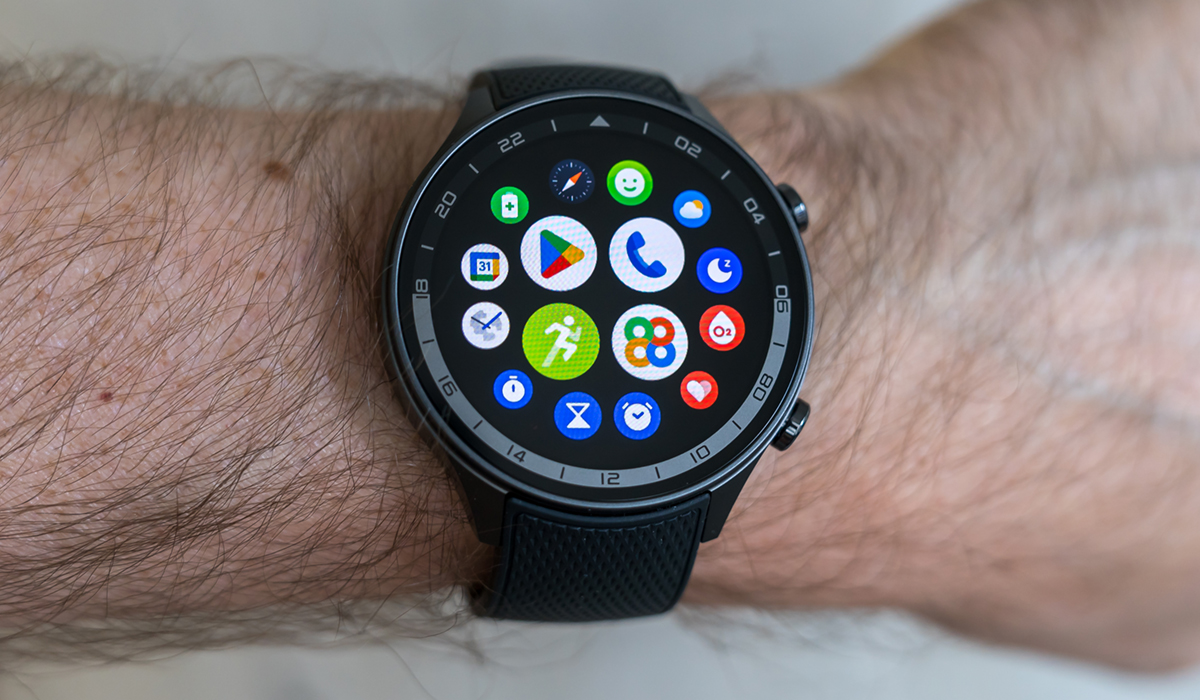
There are abundant choices to make when it comes to which smartwatch you should strap on your wrist. The best options are those that will do the most for your lifestyle and activity goals. You’ll also need something that will be compatible with the phone you’re using. For example, the Apple Watch will only work with iOS devices, as it’s not compatible with Android. The same is true in reverse for Samsung Galaxy Watches, which are no longer compatible with iPhones. They work with all Android devices, but some features are locked to Samsung Galaxy phones. With that in mind, here are some smartwatches to look out for:
Apple
The Apple Watch has had many iterations over the years, getting better with each one. Working exclusively with iPhone, it offers an incredibly intuitive, integrated experience. You get all your relevant phone notifications, access to apps like Apple Fitness+ and Apple Music as well as third-party apps, and more. The design remained largely unchanged until the Apple Watch Series 10, which is thinner and with more screen real estate. While battery life remains the one downside at 18 hours per charge, this model vastly improves that with a faster charging coil. But the Apple Watch and Apple iPhone work beautifully together in perfect synchronistic harmony.
Fitbit
Fitbit’s smartwatch lineup includes the Versa and Sense, both of which work with Android and iOS While they share many of the same design traits inside and out, they differ in that the Sense features more of the latest health and wellness tracking sensors and technologies, whereas the Versa concentrates more on exercise tracking. Both watches can track the same exercises in the same way, and have the same access to the same services. It all depends on what sensors and hardware are embedded in each watch. That’s why Sense 2 can track skin temperature (electrodermal activity) and ECG (electrocardiogram) while Versa 4 can’t, for example.
Both work with the Fitbit app, which is transitioning to log in via Google account going forward. Note that while they have tons of features, some are locked unless you sign up for a Fitbit Premium subscription. The good new is that most new purchases come with a trial period to try it out.
In 2022, Google, which owns Fitbit, launched its own branded smartwatch called the Pixel Watch. This smartwatch has a round face and plenty of health and wellness tracking features. It also seamlessly integrates with Android phones for notifications, apps, and more. It works with all Android devices but it especially great when paired with a Google Pixel phone. There are tons of great smart features with new ones being added all the time. This includes health and safety features as well, new sensors, improved sleep tracking, and more.
Garmin
Garmin smartwatches come in different series that looks a little different and may focus on different things. MarQ is the luxury line that features the most elaborate mix of design and functionality. Fenix is the high-end line, where there’s less of a focus on using apps onscreen, and more on multisport activity with excellent tracking and location data aimed at those who are serious about getting fit. Forerunner has the clue in its name, which caters to runners but also offers plenty of other exercises to track as well.
Vivoactive and Venu both lean more towards fashionable designs, with touchscreens and vivid screens to go with all the tracking features for which Garmin is known. The Instinct models remove colour from the screen, along with music and apps, to keep things simple and focused on staying active. Lily goes with a slender design for women who prefer something smaller. Golf fans can also look for golf-focused Garmin watches that are among the best available. All Garmin smartwatched work with both iOS and Android.
Samsung
Samsung Galaxy smartwatches have evolved to now run on Google’s Wear OS wearable operating system. It resembles Samsung’s own Tizen platform from previous Galaxy Watches. But it works differently because they better integrate with apps available on the Google Play Store. They offer a mix of exercise tracking and smart features that extend from your smartphone, with tighter integration for Samsung phones and tablets. That integration isn’t exclusive to them because you can still use a Galaxy Watch with other Android devices and get many of the same features. However, you get a fully integrated experience when using one with a Samsung Galaxy phone.
Samsung has been expanding its line, adding its first rugged smartwatch, the Samsung Galaxy Watch Ultra, to the line. This one is catered to outdoor adventurers.
OnePlus
After launching a smartwatch in 2021 that wasn’t very well received, OnePlus came back with a vengeance in 2024 with its first smartwatch in years. The company used all the feedback to redesign a new model that has been a hit. Chief among the improvements in the OnePlus Watch 2 and OnePlus Watch 2R is a dual-chip architecture that helps extend battery life. One chip handles background functions that run 24/7 while a second handles the more demanding tasks, like apps, navigation, workout tracking, and more. The result is a premium smartwatch with incredible battery life.
Chances are we’ll see more from OnePlus in this space. It’s one of the competitors to watch going forward, and while it works with both Androi and iOS, you get a better experience with Android.
Citizen
Citizen smartwatches are unique by comparison because they are largely hybrid designs mixing both digital and analog elements together. That allows them to retain the look of a classic timepiece, as seen in the CZ, CZ Smart, and Smart Hybrid. Others, like the CZ Smart PQ2 Casual and CZ Smart PQ2 Sport, also come in different sizes. All Citizen smartwatches work with both iOS and Android devices.
New technology in smartwatches
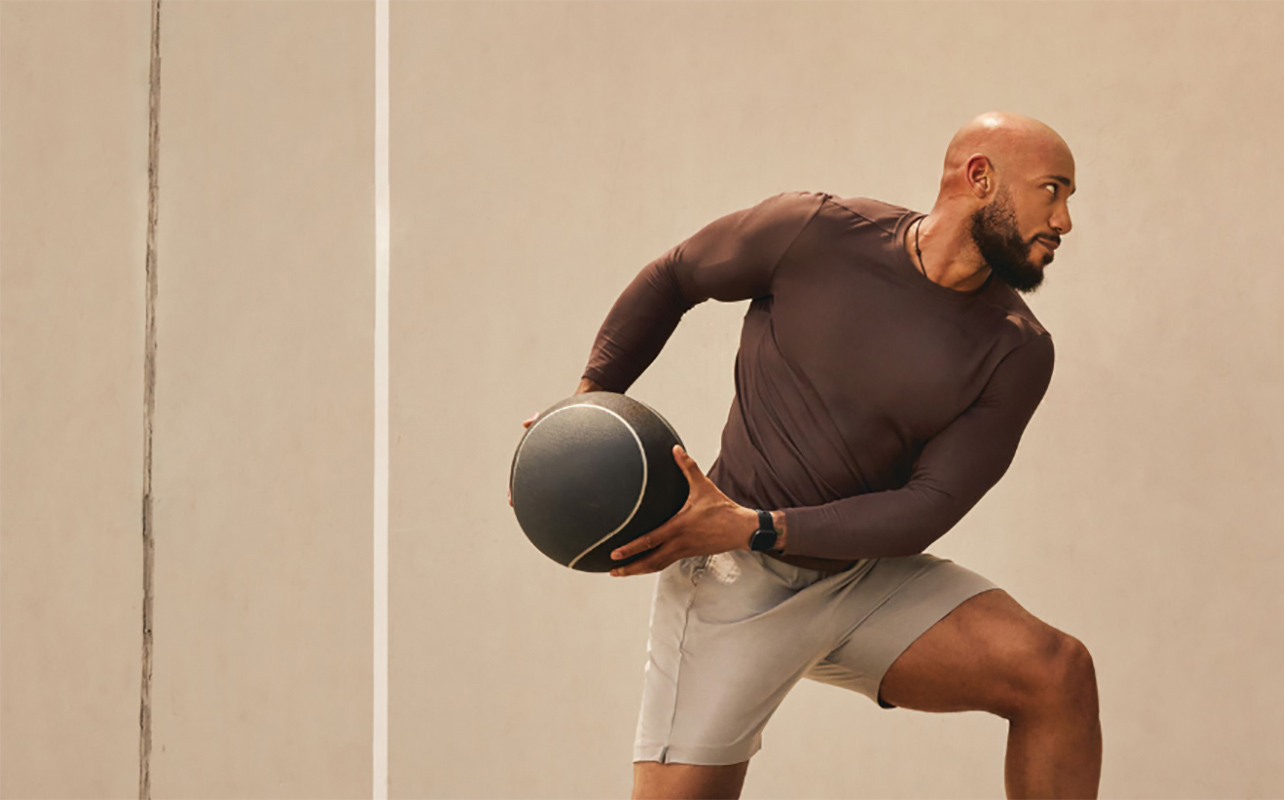
Smartwatches track all of your basic activity metrics including steps, distance, speed, pace, calories burned, and in some cases, elevation. It compiles all of the data you track for easy access on your watch. You can also sync your data with an app on your phone, where you can monitor your improvement over days, weeks, months, and years.
Standard activity and exercise tracking
Built-in pedometers and accelerometers enable smartwatches to track all types of movement. Altimeters are another standard feature to track elevation, also telling you how many flights of stairs—or an approximate equivalent—you climb every day. Exercise tracking continues to be more sophisticated, offering a variety of workouts that include hiking, biking, running, HIIT training, weight training, cross-training, aerobics, yoga, and many more.
The embedded heart monitor tracks heart rate throughout any activity or workout, including peak heart rate, resting heart rate, and whether you crossed a max heart rate threshold. This doesn’t have to stay on land, either. Manufacturers are also making their smartwatches more ruggedly durable with 5ATM (and more) water resistance so it’s easier to track swimming and waterborne activities.
Exercise tracking also goes hand-in-hand with new health-tracking features that can provide a better sense of how you’re doing. Here are some that stand out:
SpO2 (Pulse Oximeter)
Smartwaches with SpO2 sensors are essentially pulse oximeters that can read blood oxygen levels. They do it by shining infrared light through the wrist, reflecting off blood tissue containing oxygen back to the sensor to provide a percentage displayed on the watch. Some SpO2 sensors can function at any time, whereas others may take most readings during sleep.
ECG (Electrocardiogram)
An ECG measures a heart’s rhythm and electrical activity and is best used by anyone who is at least 22 years old. Smartwatches with ECG capabilities look for signs of atrial fibrillation (Afib), otherwise known as an irregular heartbeat. ECG features aren’t available on every smartwatch, even if the technology exists on it. That’s because the feature requires approval from government regulators. In Canada, the ECG features on select Apple Watch and Samsung Galaxy Watch models have been approved and are available to use.
Daily readiness
Some smartwatches use data from multiple sensors to gauge daily readiness. To get a score, the watch will compare heart rate variability (HRV) readings with daily activity and sleep quality. It will then intelligently assess how prepared you are for light or vigorous activity when you wake up to start your day. The higher the score, the more intensely you can work out. Lower scores indicate fatigue or stress. Various smartwatches may offer a variation of this feature.
Sleep tracking
Wearing a smartwatch to bed allows it to track sleep quality through various metrics. This is a common feature on current smartwatches that tracks your heart rate and blood oxygen (SpO2), while the accelerometer senses how much you move. Sleep tracking includes a breakdown of time spent in each sleep cycle (light, deep, REM), along with details on whether you were restless or awake at any point while asleep. Some of the latest smartwatches even offer advanced sleep coaching.
Vitals
The most premium smartwatches add new vitals features that takes into account all of your data to provide you with a comprehensive picture of your health. They can advise if any outliers are detected in vitals like blood oxygen, sleep duration, heart rate, and recovery.
Sleep apnea
A popular variable now being offered in some smartwatches, namely the Apple Watch Series 10, is sleep apnea detection. This feature measures you breathing and breathing disturbances throughout the night for a period of 30 days. From there, it can look at how many (if any) instances you experiences and advise if possible sleep apnea is detected. This is a crucial feature for those who might suspect they suffer from sleep apnea but have never been officially tested. From there, they can take the data to a doctor or other medical professional for further assessment.
Here is an article to help you learn more about advanced smartwatch features.
How to make the most of your smartwatch with the app
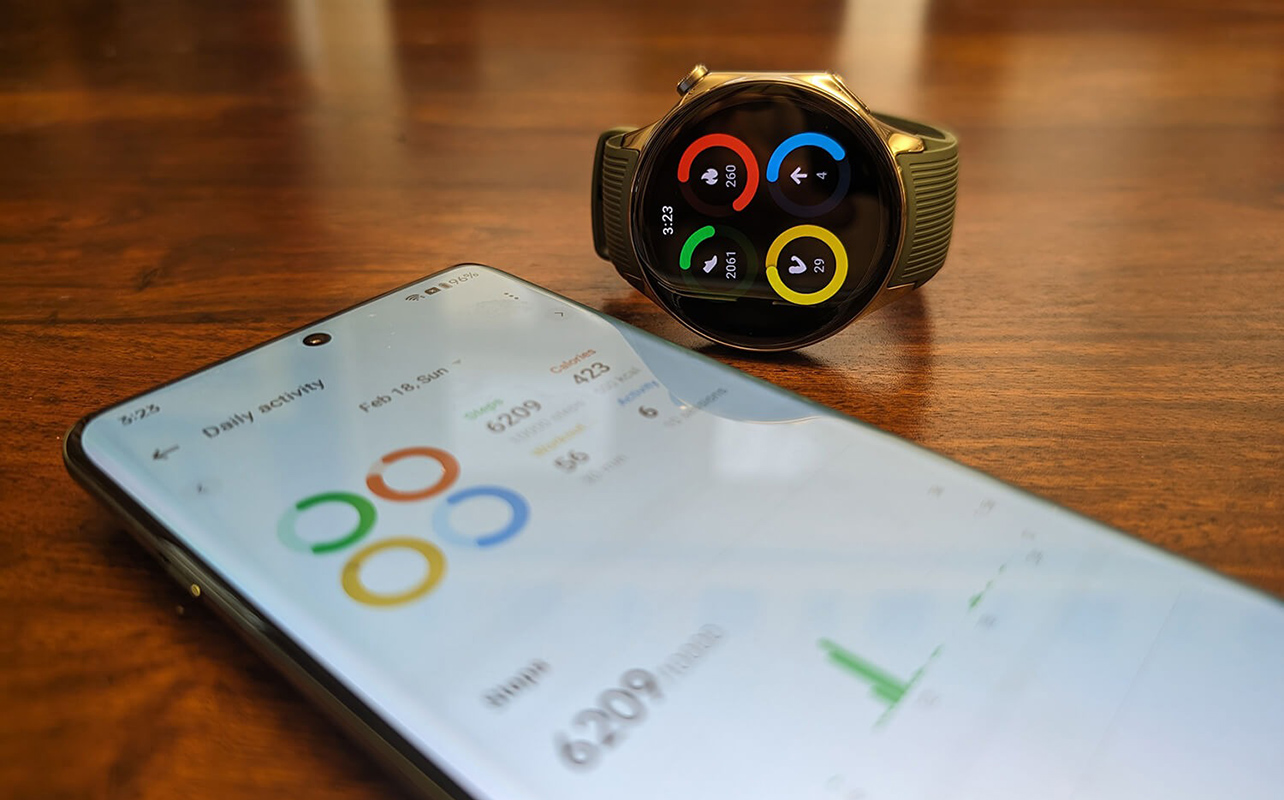
App support plays an important role in what a smartwatch can do. It’s where you see all your historical and current data. They also tie the watch to your phone in helpful ways, like using a locator feature in case you can’t find your phone. In addition to using the app that works with the smartwatch, many also allow you to sync other apps to view all your data in one place. This could include running apps like Strava, smart scale apps like Withings, or food tracking apps like MyFitnessPal. Additionally, some smartwatches work with companion subscription apps, like Fitbit Premium and Apple Fitness+.
Here are some companion apps, both free and paid, that stand out:
Garmin Connect and Connect IQ
Garmin Connect displays all the pertinent information coming from your Garmin smartwatch, with weekly, monthly, and yearly stats indicating progress. A highly customizable interface enables you to choose the order in which you see the data you want. Separate sections challenge you to hit new goals or start new workouts. Training and Planning is a deep dive into exercise and training routines that tie into Garmin Coach. This unique feature keeps tabs on both your progress and keeps you honest about meeting your goals.
Within Connect, there is a Connect IQ Store to download compatible apps and watch faces for your Garmin watch. It’s even possible to add golf courses and make use of specific features through a separate app called Garmin Golf. The level of overall tracking features in Connect is perhaps the most extensive available from any brand.
Apple Fitness+
Along with the Apple Health, Apple Fitness, and Apple Watch apps, the Apple Watch also works with Fitness+, Apple’s subscription-based exercise platform. Accessible through the Apple Fitness app, it affords access to guided workouts of all types, along with running and walking guidance, meditation, and more. Of course, everything is set to Apple Music playlists. You can watch the guided video workouts on an iPhone, iPad, Mac, even on a big screen through mirrororing or Apple TV devices. The workout stats appear on the watch screen so you can follow along in real-time. Hosted by real-life fitness enthusiasts and experts, every exercise comes with guidance over form and pace. There are tons of workouts, from beginner to expert, in various durations. You can also set up custom workout plans.
Fitbit Premium
Fitbit Premium is a subscription-based service found within the Fitbit app, which is transitioning to Google account logins. Along with provided more in-depth details about your health and wellness, there’s also access to guided workout, health information and articles, mental wellness guides, nutrition information, and more. It enables a Daily Readiness score with stress tracking (on certain Fitbit devices). This provides insight into how you’re doing and what your body might be ready to do to get active. The Fitbit Premium subscription works with both Fitbit and Google Pixel smartwatches.
Samsung Health
This is the primary app that works with Samsung Galaxy Watch models. It’s used to track all activity metrics while offering insights into health and wellness at the same time. It uses the various sensors on compatible Galaxy Watches to get a body composition measurement. Then, use that to tailor workout goals or targets that work for you. It also tracks route information based on the watch’s onboard GPS to read distance and pace relative to movement. Sleep tracking can include snore detection, while coaching tips come from analyzing sleep patterns to look for ways to improve poor habits.
Citizen Connected
Designed for Citizen CZ Smart hybrid and touchscreen smartwatches, it takes the data from the watch to show your activity metrics, including whether you hit your daily goal or not. You can customize the watch face and set controls for music and other apps that send notifications to you through the watch.
Take the next step

From special features that range from activity tracking, voice control, quick payment, and more, there are lots of options when it comes to finding the right smartwatch for your lifestyle. Check out a wide selection of all types of smartwatches at Best Buy Canada.







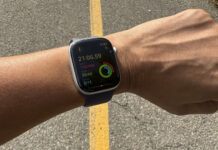
I enuoy whatt yoou guys tend tto bee upp too. Thiss sort of clever work and coverage!
Keepp up tthe fantastic works guys I’ve youu giys tto myy pwrsonal blogroll.
I am looking for a smart watch which has a “Pedometer” built in. Like:
Steps, distance, miles/kilometers ,
and Calories burned.
I am not interested in anything else.
Your Smart watch can keep track of just about everything. At a glanceyouncan check just ABOUT ANYTHING YOU SHOULD BEBCONCERNED ABOUT, This gives youthe time to do things you’ve been neglecting.
Comments are closed.